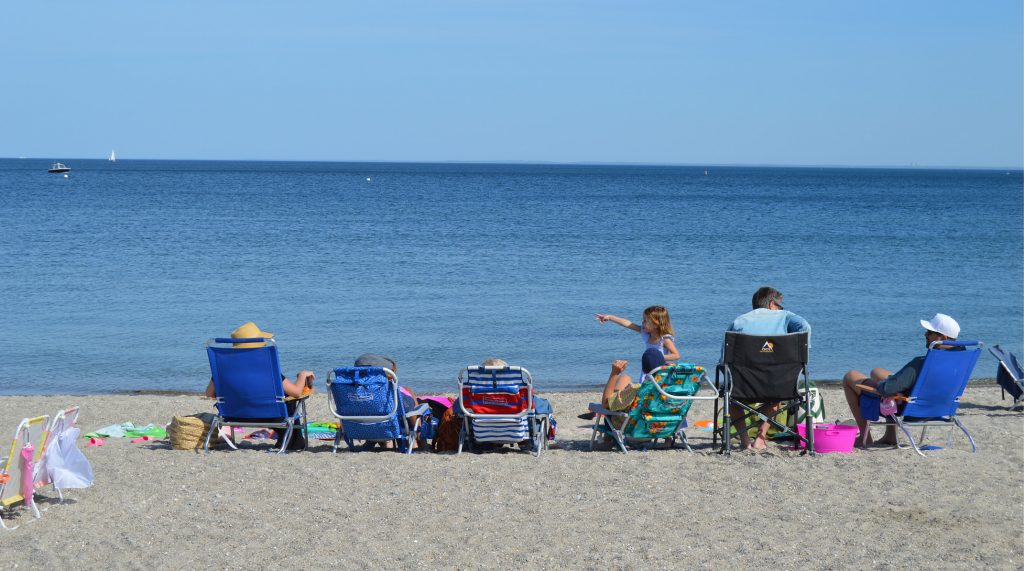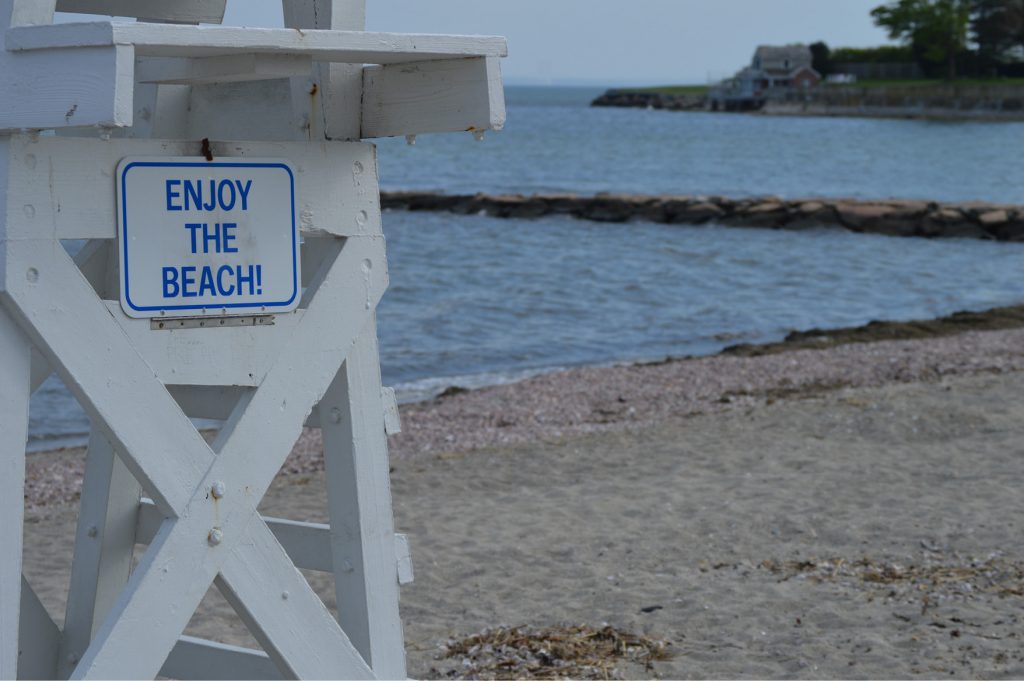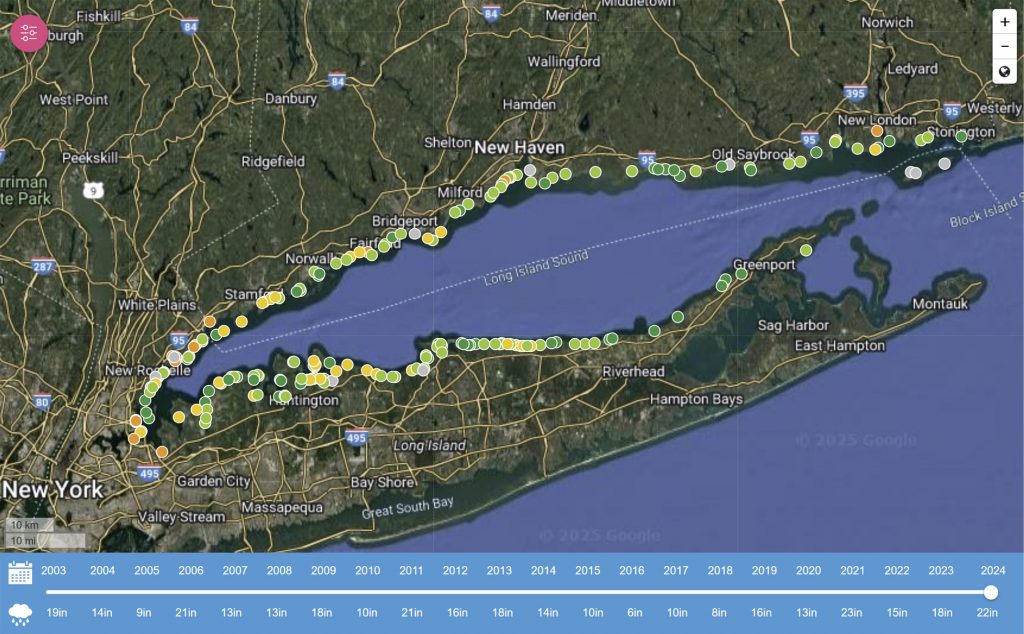We tend to see report cards as documents focused only on the past. But the 2025 Long Island Sound Beach Report, released by Save the Sound just before Memorial Day Weekend, is as much about the future.
Yes, the biennial Beach Report presents water quality grades from recent swimming seasons—2022 through 2024, in this case. It evaluates how water samples collected at roughly 200 public and private beaches around the Sound performed against state safe swimming standards in New York and Connecticut. This year’s Beach Report displays results from three years’ worth of data— stemming from those samples for pathogen indicator bacteria, which are taken by local health departments. All beaches that are monitored in accordance with state law and the federal Beaches Environmental Assessment and Coastal Health Act (aka the BEACH Act) and report the results of at least nine samples during a swimming season receive a grade in the 2025 Beach Report.
Though the information in the report reflects years past, it’s most useful in finding ways to keep beaches safe and open in future swimming seasons. Really, that’s a large part of why these reports exist, as an advocacy tool.
The recently released Beach Grades suggest stormwater runoff pollution across the region, outdated wastewater infrastructure, animal waste from wildlife and our pets, climate change, as well as other stressors are affecting water quality at beaches along all 600 miles of Long Island Sound coastline. Seventy-two percent of the beaches received a grade in the A or B range for 2024, which means the water quality at the vast majority of Sound beaches was consistently favorable for swimming. That number is down, though, from the 2023 Beach Report, when 78 percent of Sound beaches scored in the A/B range (for the 2022 swimming season; the Beach Report is always published the spring after the most recent monitoring season).

Compo Beach, Westport, CT
The total number of A grades Sound-wide continues to decline. In 2020, 116 beaches received at least an A-. Only 55 beaches earned As for the 2024 swimming season.
At the same time, the Beach Report showed the number of beaches getting Ds or Fs is on the rise. Not a single beach received a failing grade in 2024, the first time that’s happened since 2020. Back then, though, there were only four Ds; the 2024 swimming season saw 16.
It’s too early to suggest a statistically defensible downward trend in water quality at Long Island Sound beaches. Year-to-year variability in grades hinges on a lot of factors—the amount of precipitation in a given year (2023-2024 was the wettest two-year period recorded by Save the Sound in its data going back to 2003, and 2020-2024 was the wettest five-year period), the number of samples taken at a site over a season and when those samples happened to be taken (samples collected after a quarter-inch of rain has fallen in the preceding 48 hours are more likely to result in poorer grades).

Southport Beach, Southport, CT
Still, there is no time like the present for communities to prioritize conversations about the water quality at their local beach. The 2025 Beach Report showcases state and municipal efforts to address water quality challenges, and even by a community group in Connecticut that launched a campaign to keep dog waste off their local beach.
We know what the challenges are. And thanks to departments of health, local beach monitors, and science- and data-driven grades like the ones presented in the 2025 Long Island Sound Beach Report, we know which beaches may have a problem that warrants further investigation and action.
Looking to better understand the grade your favorite beach received before talking about it with your local officials? Reach out to Save the Sound at pollution@savethesound.org.
Save the Sound leads environmental action across the Long Island Sound region to protect the Sound and its rivers, fight climate change, save endangered lands, and work with nature to restore ecosystems. More info at savethesound.org. ■


